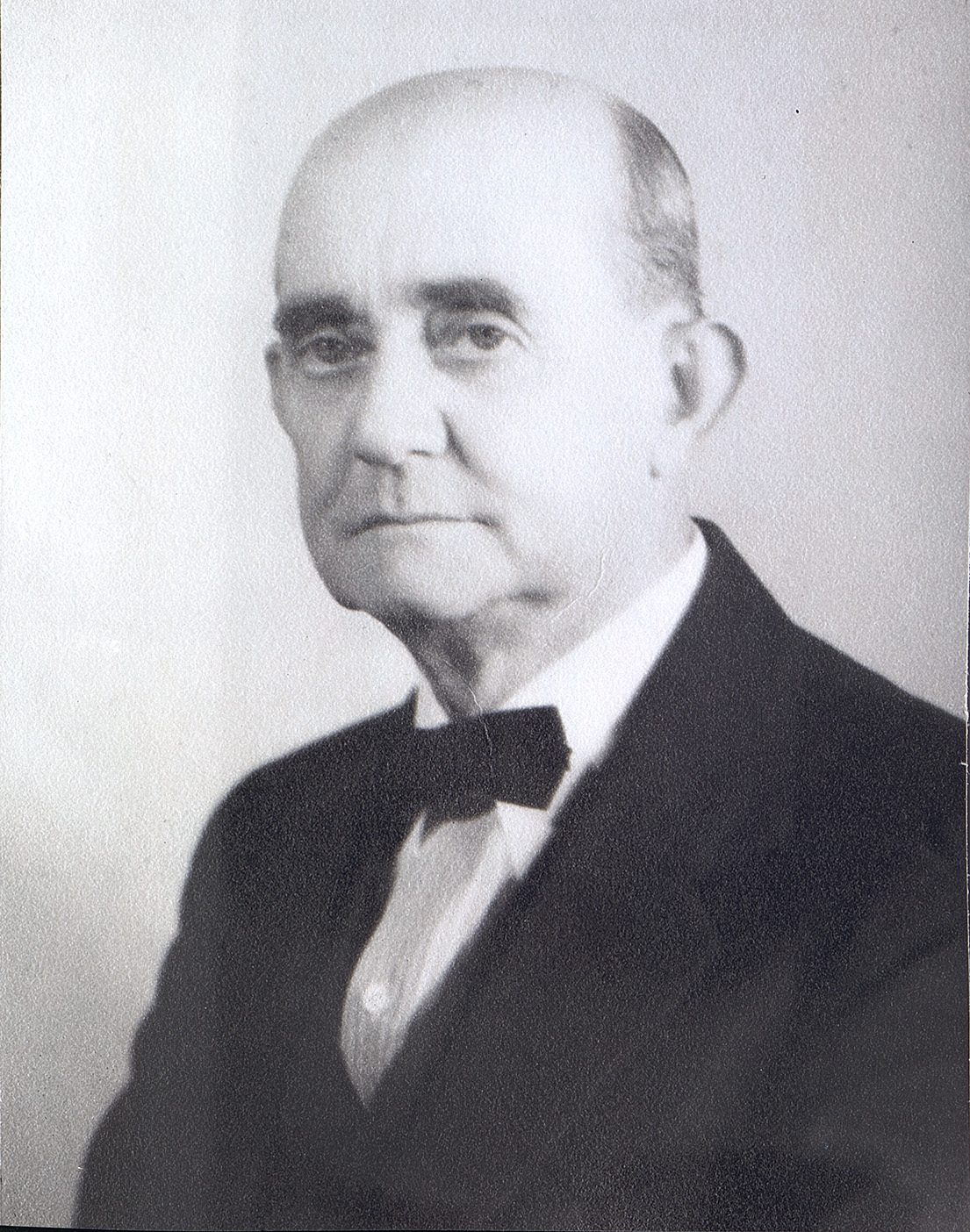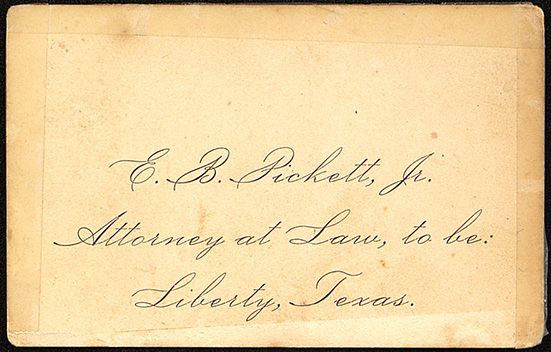

E. B. Pickett Jr. Law Firm Papers (1902-1951) document Pickett’s practice as a Liberty, Texas lawyer. The collection provides a glimpse into the legal landscape and daily dealings of an East Texas attorney during the first half of the 20th century, from scheduling court trials to establishing liability for injury, from solving family estate conflicts to negotiating leases for new oil drilling operations.
Upon graduation from the University of Texas with a Bachelor of Laws degree in 1899, E. B. Pickett Jr. returned to his hometown Liberty to practice law. His firm, opened with C.F. Stevens, was originally located at the corner of Travis Street and Trinity Street. The firm later moved to the Ager Building at the corner of Trinity Street and Main Street. After a fire in 1909, the Ager Building was rebuilt at the same site, and Pickett maintained his practice there until his death in 1951. Pickett, shown here in his first office, established a solo practice in 1912.

His firm had a wide-ranging practice. From contract issues to personal injury, land sales to criminal defense, it represented a variety of interests. In one notable case from 1909, Kilgore v. Jackson, Pickett represented the Wallisville, Texas faction after an election resulted in the relocation of the Chambers County seat and courthouse from Wallisville to Anahuac. E. B. Pickett, Jr.’s son Bradford Pickett joined the firm after receiving an LL.B. from the University of Texas School of Law in 1936. The addition meant the younger Pickett occasionally found himself in less glamorous settings, as this photograph of Bradford, at right, looking for a property corner in the Daisetta Marsh attests.
The collection arrived in wooden document boxes, which can also be seen on top of the bookcase in the photograph of Pickett in his first Liberty office. Although the boxes added a historical touch to storage, they were not archivally sound and have been replaced with archival supplies. Incoming and outgoing correspondence from the collection for the year 1936 is available in a digital exhibit.

